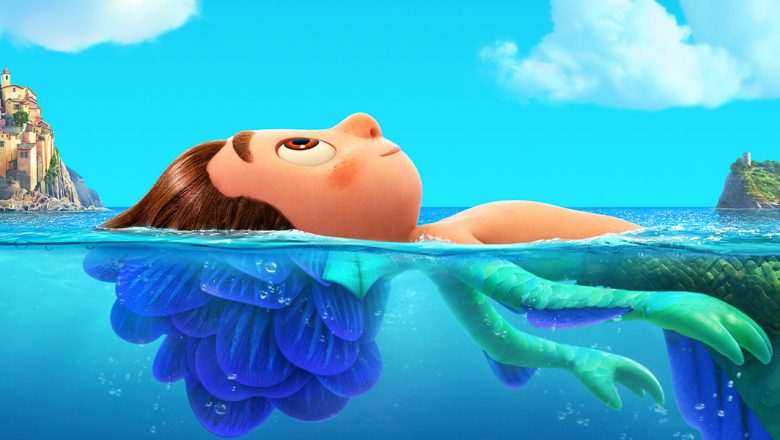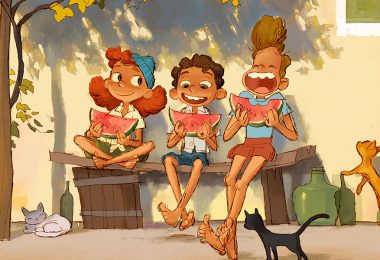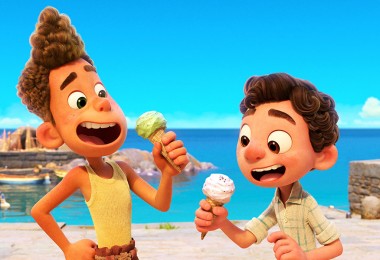By Zach Johnson
Disney and Pixar’s Luca is a coming-of-age story about a sea monster who dreams of life above the surface. Encouraged by his new BFF Alberto Scorfano (voice of Jack Dylan Grazer), Luca Paguro (voice of Jacob Tremblay) sets foot—er, fin—on land, where he is amazed to discover he can transform into a human! This isn’t news to Alberto, who has been masquerading as a human on land for some time. But for Luca, it changes everything.
When sea monsters are wet, they retain their natural form. But when they’re dry, they appear human. The concept is simple enough, but it proved to be an exciting challenge for the filmmakers at Pixar Animation Studios, who had to determine how to depict the transformation between the two forms in a fun and organic way. “We first thought of it like a mechanical bodysuit, where the scales would flip and reveal something,” recalls character supervisor Sajan Skaria. “And then [story artist] Daniel López Muñoz said, ‘No, it needs to come from the heart. It’s internal. It’s Luca the human emerging from the sea monster.’ That made a huge difference, because now we had a place where it could originate.”
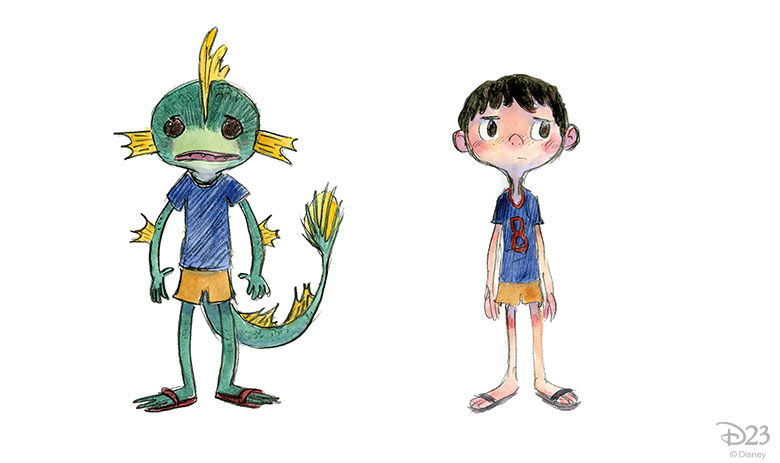
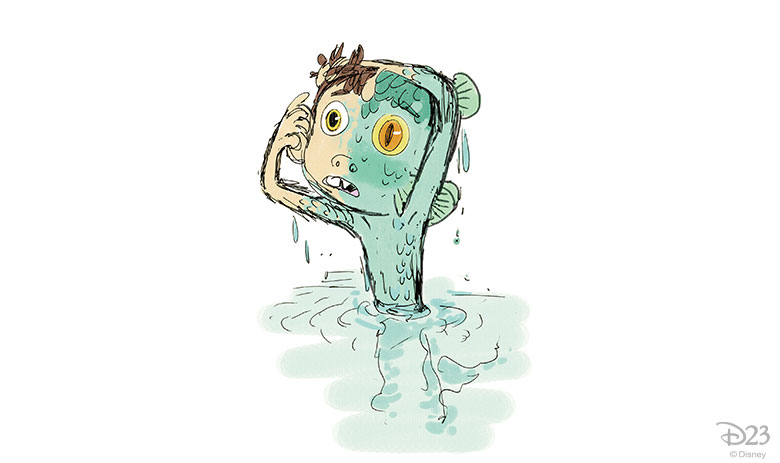
Whether it was director Enrico Casarosa’s early sketches or influences found within the animal world, Skaria adds, “Inspiration-wise, we were looking all over the place for this.”
Using concept art as a starting point and following story-driven parameters, technical teams aimed to give artists the flexibility to craft the pivotal change by dictating details like the origin and the speed of the transformation. To animate the sequence, they would rig the character models so they “had enough of the options an artist would need,” says character supervisor Beth Albright. “All the different regions of the transformation could then be adjusted separately. There are all these layers of things going on with the human skin, the sea monster skin, the octopus spots, and the flipping scales, and now they could tune all of that individually—and that’s something we have never been able to do before.”


According to Albright, that type of effect would typically “go through animation, then go through an effects pass, and then we would see it after the render.” They were able to save several steps making Luca, which allowed the animators to focus on the creative aspects. “Being able to pull all that back into our animation software so the animators could see it live was huge,” says Albright. “It was surprising even the first time we showed Enrico; he started to comment on the shading because he thought he was looking at a render! And we had to tell him, ‘No, this is just an animation rig. This hasn’t been rendered and it’s not shaded.’ So, that’s just one way where we were able to make that space for artists to work.”
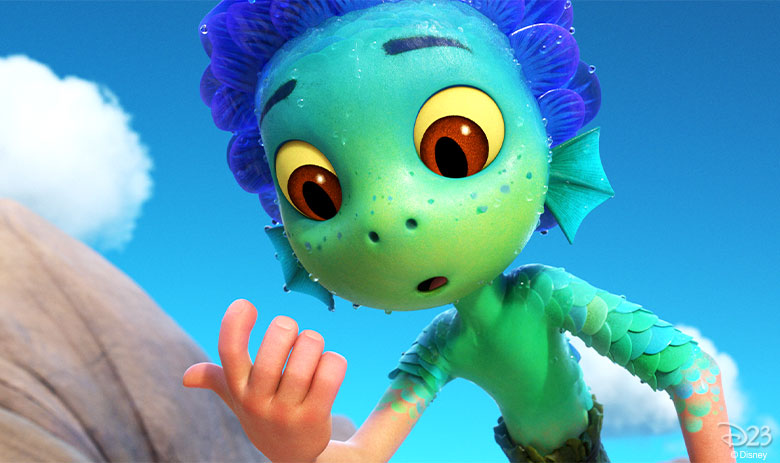
The end result—which was developed through the continuous collaboration between multiple teams, spanning animation, art, characters, effects, lighting, simulation, and tools and global technology—is seamless and stylized. Says Skaria, “Our driving theme in technical was, ‘Let the modeler just model, and then we’ll figure out everything around it.”
“We tried to do that with the rest of our department, too,” adds Albright. “For example, when we were working on Luca’s human model and the sea monster model, even though we knew they needed to transform, we didn’t want the modeling process to be constrained by knowing they had to transform and being concerned that everything had to match up. Instead, we had the same person model both of those, Tanja Krampfert, and she worked on them simultaneously. It was always clear: ‘Make the best sea monster you can. Make the best human you can. We’ll figure out the transformation later.’ We did that at every stage.”
To see Luca’s glorious transformation, stream Luca when it debuts on Disney+ June 18.


